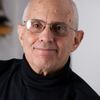
HuffPost has a slide show up showing the percentage of Hindus in various American cities. It is based on a survey by the Association of Statisticians of American Religious Bodies (ASARB), which finds, predictably, that most American Hindus are in metropolitan areas with populations greater than a million, mainly on the two coasts. Surprisingly, however, the cities with highest percentage of Hindus (as opposed to the total number) include Phoenix, Arizona (#2), Austin, Texas (#3), Columbus, Ohio (#4), Raleigh, North Carolina (#5), Milwaukee (#10), and Oklahoma City (#11). Which metropolitan area had the highest percentage of Hindus? San Jose, with 2.5 percent, thanks no doubt to all the engineers, software designers, and high-tech entrepreneurs who migrated to Silicon Valley from India.
One data point is misleading: the study says there are about 641,200 adherents of Hinduism in America. At first glance, this would seem to be a grave error, since most sources number Hindus of Indian descent at close to two and a half million. The reason for the discrepancy is that the study focuses on adherents, which it measures by participation in a religious congregation, defined as "groups of people who meet regularly at a pre-announced time and location." To put that in perspective, there are about 6.5 million Jews in America, but if only regular synagogue goers were counted the number might be a fraction of that amount. More importantly, temple attendance is an awful criterion to apply to Hindus, since their tradition does not emphasize congregational activity and many Hindus prefer to do their spiritual practices on home altars and meditation cushions.
One takeaway from the survey is that, pretty much wherever you live in America, there are Hindus amongst you. In the past, Americans found it hard to accommodate immigrants who brought with them new religious forms. It took a long time to get used to having Jews and Roman Catholics around, and 9/11 made the assimilation of Muslims slower and harder than it would otherwise have been. Overall, we have become far more tolerant of religious diversity. Many of us, in fact, relish it. As a consequence, the country has been relatively quick to welcome its Hindu citizens.
Also making the assimilation easier is the fact that essential features of Hinduism are remarkably compatible with such American values as freedom of choice and evidence-based pragmatism. At the risk of oversimplifying a multifaceted and complex tradition, Hinduism is more experience-based than belief-based, emphasizing spiritual practice over dogma; it is more inner-directed than outer-directed, encouraging individual to choose their own paths; and it is pluralistic and non-competitive by nature, acknowledging the validity of all roads to the Sacred. Those qualities make what appears on the surface to be foreign and strange rather easy to integrate into the fabric of American life.
In truth, the presence of Hindus of Indian descent is just the latest chapter in a story that spans more than two centuries of our history. The nation has been assimilating the universal spiritual teachings at the core of Hinduism ever since Ralph Waldo Emerson and Henry David Thoreau had their minds blown by translations of sacred texts like the Bhagavad Gita. The transmission was accelerated by the efforts of influential gurus and yoga masters, and through the work of Western thinkers, writers, musicians, psychologists, scientists, and self-help mavens whose views were shaped at least in part by the philosophy of Vedanta and the methods of yoga. Think of it: not that long ago, sitting with your eyes closed intoning a Sanskrit mantra was about as bizarre as voodoo; now healthcare practitioners are as likely to advise you to meditate as to take a pill.
Much of this transpired without the word Hinduism being uttered, because India's ancient teachings can also be understood in secular terms. Call it what you will, my research convinces me that this East-to-West transmission has both broadened and deepened the spiritual foundation of America. That trend should only accelerate now that the citizens of Pittsburgh, Memphis, and other heartland cities have Hindu neighbors, coworkers, classmates, and friends. You might want to greet them with a friendly "Namaste." Then have a conversation. You will probably discover that Hinduism is not exactly what you were told it was in school, or what you gleaned from onscreen images of India. You might even learn something useful.
